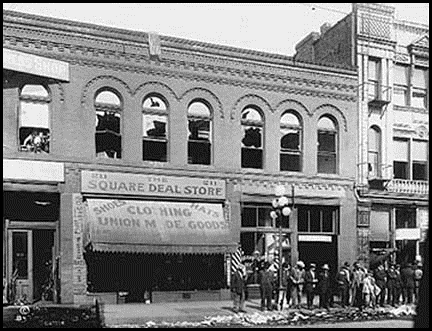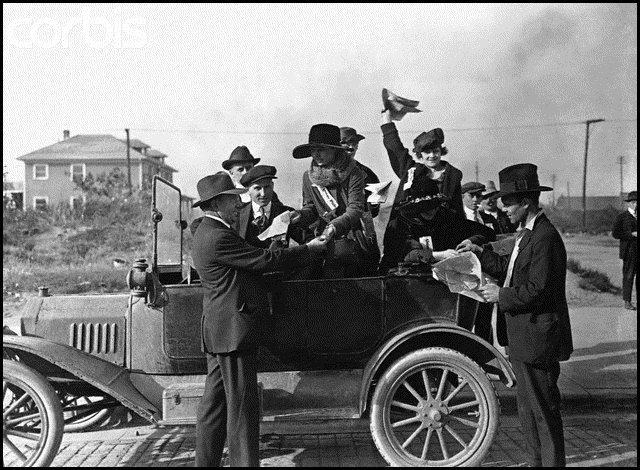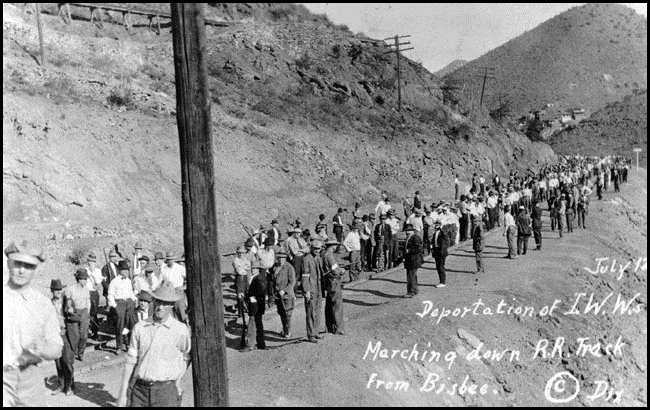Dynamite first appeared in 1931, but journalist Louis Adamic was far from being a bomb-toter. He wrote two successful memoirs --- one of which was a Book-of-the-Month Club selection --- and was entertained at the Roosevelt White House. He was a Socialist, but, as he wrote a friend, "I'm inclined toward Nietzsche, more than Marx." One gets the feeling that this, his first successful book, appeared with the title Dynamite more to attract attention than to tell us about bomb-wielders.
At times, the style can be pedestrian, the Haymarket Tragedy dutifully followed by the Homestead Strike, followed by Eugene B. Debs, the International Workers of the World and the Centralia killings. But Dynamite comes to life with the retelling of the bombing of the Los Angeles Times.
It was not just a matter of labor unions vs. General Harrison Gray Otis, the owner. It was also San Francisco vs. Los Angeles. To the north, the unions were all-powerful; labor ran the workforce and the government. In Los Angeles, unions were weak. Otis referred to labor organizers as "union rowdies" and "gas-pipe ruffians." He fought them bitterly for twenty years, but in the fall of 1910, someone blew up the Times building.
The unions said that it was a gas leak. Otis said it was the unions. He editorialized:
O you anarchic scum, you cowardly murderers, you leeches upon honest labor, you midnight assassins, you whose hands are dripping with the innocent blood of your victims, you against whom the walls of poor widows and the cries of fatherless children are ascending to the Great White Throne.
"Look upon the crumbled and blackened walls, look at the ruins wherein are buried the calcined remains of those whom you murdered." The explosion, the accusations, the revelations, the reverberations, the confessions (and the ultimate outcome) make for fine and instructive reading.
The best chapter by far, though, is a reflective one, towards the end of Dynamite. It's entitled "Racketeering as a Phase of Class Conflict."
The thesis is that the conflict between the haves and the have-nots evolved into a civil war. To fight the unions, the industrialists brought in gangs, criminals, and the Pinkerton detectives. To fight back, the unions created their own toughs, modeled on the Molly Maguires. Both sides inevitably nurtured "racketeers."
The violence of these gangs was augmented by economic depression, the coming of Prohibition, and the innate aggressiveness that is peculiar to America. In Europe, "the poor and lowly have been taught to accept their plight without much complaint."
Life in the United States, as compared with life in other so called civilized countries, has been marked by its restlessness, adventurousness, brutality, instability. The country is huge and rich, with thousands of real and fairly legitimate opportunities, open to all who wish to seek them, and millions of individuals eager for success, who are seeking them.
A man may be "intrinsically as honest and law-abiding as anyone, but when he finds himself out of work and without money, he is already predisposed to look up his boot-legger acquaintance and be initiated into the racket."
He may perhaps be caught at it, but in jail he will learn much more about crime and racketeering. He will realize that, even with prison staring him in the face, crime or racketeering is better than being geared to the industrial machine, where, in times of depression, and certainly in his old age, he will be thrown out, a wreck, upon the mercies of the Salvation Army.
It is a matter of how we are seen, says the author ... how we are seen by ourselves and by others. "Unemployment causes more distress in American than anywhere else, for here a man may suffer not only from cold and hunger, but from the agonies of shame at not being able to keep up appearances against enormous odds."


